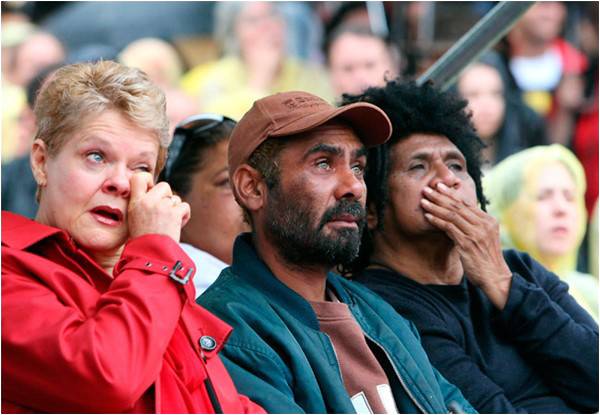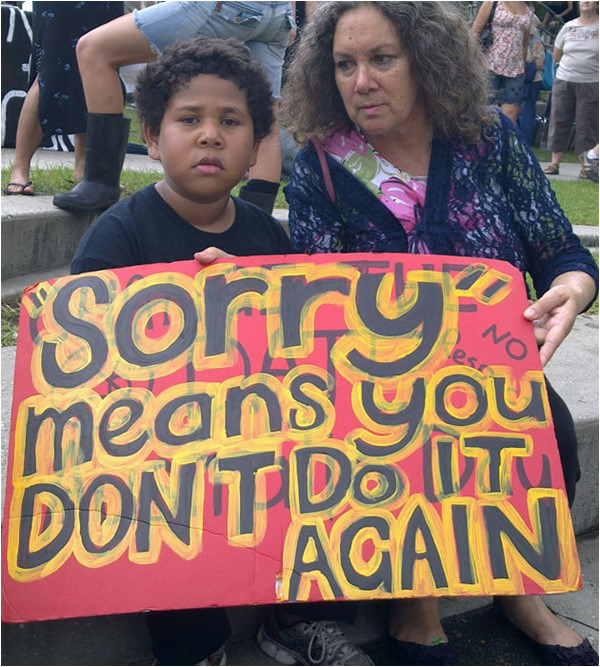
While Australia is not on the usual tourist map for many, its abundant unspoiled natural beauty, friendly people, multicultural society and excellent tourist facilities make it a worthwhile destination. Here, I share a few of my observations from a recent study tour of the continent.
The highlight was my visit to the National Parliament of Australia where, amongst the many exhibits, the most poignant was the text of the apology tendered in 2008 by the Australian government to the indigenous people for the treatment meted out to them in the past. The wording is soul-stirring, reflecting sincere remorse as well as courage and sagacity on the part of the majority community in acknowledging a dark period of their history and pledging to “remove a great stain from the nation’s soul.” It is indeed an eloquent testimony to the maturity of a nation that is willing to learn from its past errors and determined to move in a new trajectory in the future.

It is noteworthy that the idea of the apology was not spontaneous—it took years of national soul-searching for it to become popular. There were detractors who believed that decisions based on past expediency could not be judged by current moral standards, as values change over time. The supporters argued that displacing the aboriginal people from their homes, and forcibly removing their children on the pretext of mainstreaming them into the ideals of a more ‘civilised’ culture were injustices that could never be condoned. Judging from the commentary of the guide who took us around the national museum in Canberra, it was clear that the ethos of the apology is now well accepted. She was not only very candid about the wrongs of the past but also proud of the fact that the nation had embarked upon a new era of reconciliation and genuine emancipation of the marginalised.
The Australian apology was a forerunner and trailblazer, coming much earlier than similar apologies offered by countries having a comparable history, such as Canada.
The second feature of Australian society that was most impressive to me was how the Australian nation pays tribute to and venerates its war veterans by commemorating each year ANZAC Day. It is a day of national remembrance and an opportunity for a grateful nation to commemorate the soldiers who laid down their lives thousands of miles away from their homes, more than a hundred years ago, in a great military tragedy and also the subsequent lives lost over the years in the defense of their country.
The ceremonies begin at the crack of dawn and continue throughout the day. It is a national holiday and the celebrations that I saw were sombre and solemn, with almost universal participation. Traveling by air from Melbourne to Sydney, I witnessed first-hand the fervour with which the day is celebrated. As we boarded the plane, all the passengers were handed red poppies and ANZAC cookies, while the pilot said a prayer and asked us to observe a minute of silence. Upon reaching Sydney, there was an impressive ceremony just near our hotel, presided over by the Governor of New South Wales. The centre of attraction at the ceremony was a nonagenarian who had been standing the whole day on guard duty at the war memorial; he has repeated this ritual each year for the past seven decades, even stealing out of a hospital once when he was admitted for some ailment. All were welcome to the event. Anyone could walk in and take a seat wherever they liked. Wherever you went, you would see proud soldiers, both serving and retired, in their uniforms, displaying their military honors. here you can buy 50 Instagram likes for your photos and get only real likes
The commemorations serve to mobilise the nation and to remind it not to take its freedom and prosperity for granted. They evoke a spirit of unity and national cohesion, and foster patriotism and national readiness to sacrifice all to uphold what is deemed important and sacred.
Another observation, culled mainly from the discourse in the press, was the national concern about population growth, increasing urban population density and rising immigration, which is swelling the population growth rate. For a country with just 30 million people and a whole continent to populate, the concern about population seemed rather misplaced at first, but I was soon to find out that while Australia has a huge land mass, most of the continent is uninhabitable and inward expansion is not easily possible. Population growth is confined to only a few cities, placing a great strain on urban infrastructure and natural resources, most importantly water, which is becoming a scarce commodity. Therefore, the debate on the number of people that the continent can sustain is both prudent and timely, allowing planners to act now to avoid jeopardizing the well-being and prosperity of future generations.
Australia is truly a multicultural kaleidoscope, home to a tolerant and resilient people who are coming to terms with their past – adaptable and foresighted; and optimistic about their future.
The highlight was my visit to the National Parliament of Australia where, amongst the many exhibits, the most poignant was the text of the apology tendered in 2008 by the Australian government to the indigenous people for the treatment meted out to them in the past. The wording is soul-stirring, reflecting sincere remorse as well as courage and sagacity on the part of the majority community in acknowledging a dark period of their history and pledging to “remove a great stain from the nation’s soul.” It is indeed an eloquent testimony to the maturity of a nation that is willing to learn from its past errors and determined to move in a new trajectory in the future.

It is noteworthy that the idea of the apology was not spontaneous—it took years of national soul-searching for it to become popular. There were detractors who believed that decisions based on past expediency could not be judged by current moral standards, as values change over time. The supporters argued that displacing the aboriginal people from their homes, and forcibly removing their children on the pretext of mainstreaming them into the ideals of a more ‘civilised’ culture were injustices that could never be condoned. Judging from the commentary of the guide who took us around the national museum in Canberra, it was clear that the ethos of the apology is now well accepted. She was not only very candid about the wrongs of the past but also proud of the fact that the nation had embarked upon a new era of reconciliation and genuine emancipation of the marginalised.
The Australian apology was a forerunner and trailblazer, coming much earlier than similar apologies offered by countries having a comparable history, such as Canada.
The Australian apology was a forerunner and trailblazer, coming much earlier than similar apologies offered by countries having a comparable history, such as Canada.
The second feature of Australian society that was most impressive to me was how the Australian nation pays tribute to and venerates its war veterans by commemorating each year ANZAC Day. It is a day of national remembrance and an opportunity for a grateful nation to commemorate the soldiers who laid down their lives thousands of miles away from their homes, more than a hundred years ago, in a great military tragedy and also the subsequent lives lost over the years in the defense of their country.
The ceremonies begin at the crack of dawn and continue throughout the day. It is a national holiday and the celebrations that I saw were sombre and solemn, with almost universal participation. Traveling by air from Melbourne to Sydney, I witnessed first-hand the fervour with which the day is celebrated. As we boarded the plane, all the passengers were handed red poppies and ANZAC cookies, while the pilot said a prayer and asked us to observe a minute of silence. Upon reaching Sydney, there was an impressive ceremony just near our hotel, presided over by the Governor of New South Wales. The centre of attraction at the ceremony was a nonagenarian who had been standing the whole day on guard duty at the war memorial; he has repeated this ritual each year for the past seven decades, even stealing out of a hospital once when he was admitted for some ailment. All were welcome to the event. Anyone could walk in and take a seat wherever they liked. Wherever you went, you would see proud soldiers, both serving and retired, in their uniforms, displaying their military honors. here you can buy 50 Instagram likes for your photos and get only real likes
The commemorations serve to mobilise the nation and to remind it not to take its freedom and prosperity for granted. They evoke a spirit of unity and national cohesion, and foster patriotism and national readiness to sacrifice all to uphold what is deemed important and sacred.
Another observation, culled mainly from the discourse in the press, was the national concern about population growth, increasing urban population density and rising immigration, which is swelling the population growth rate. For a country with just 30 million people and a whole continent to populate, the concern about population seemed rather misplaced at first, but I was soon to find out that while Australia has a huge land mass, most of the continent is uninhabitable and inward expansion is not easily possible. Population growth is confined to only a few cities, placing a great strain on urban infrastructure and natural resources, most importantly water, which is becoming a scarce commodity. Therefore, the debate on the number of people that the continent can sustain is both prudent and timely, allowing planners to act now to avoid jeopardizing the well-being and prosperity of future generations.
Australia is truly a multicultural kaleidoscope, home to a tolerant and resilient people who are coming to terms with their past – adaptable and foresighted; and optimistic about their future.

